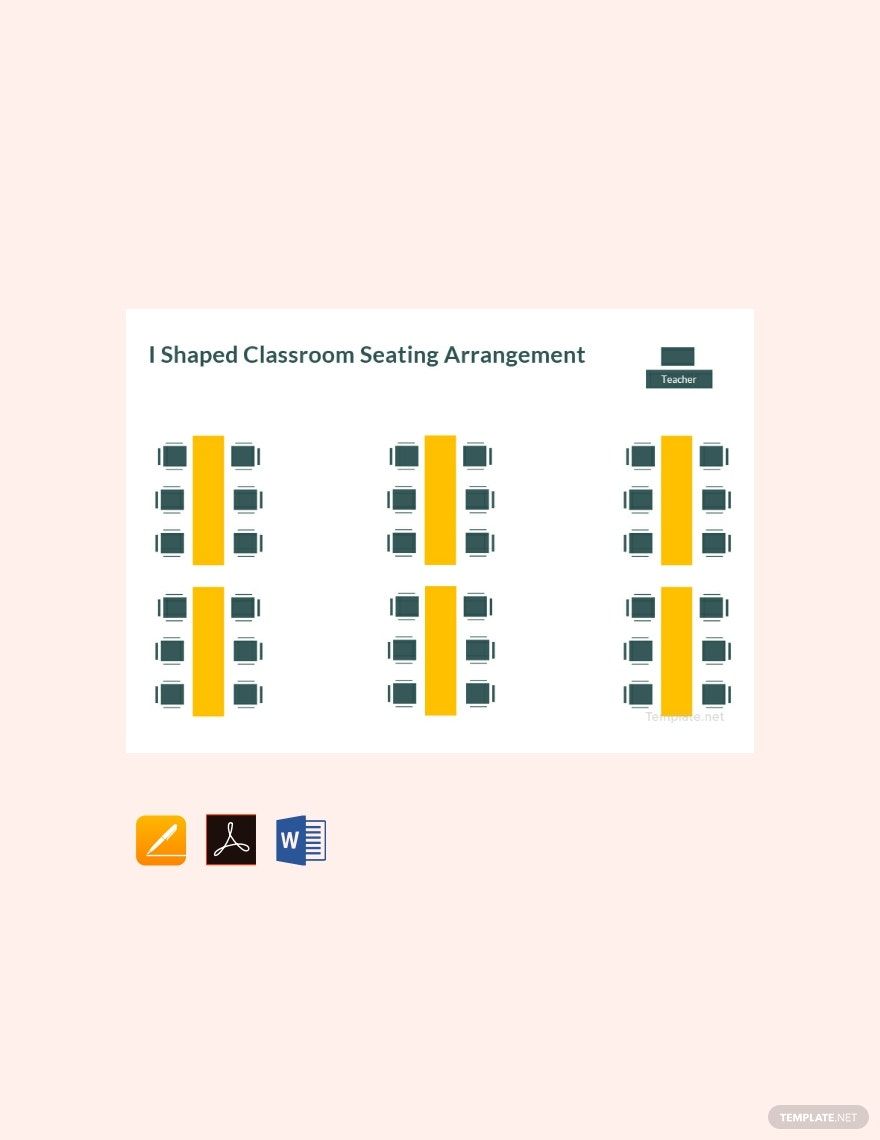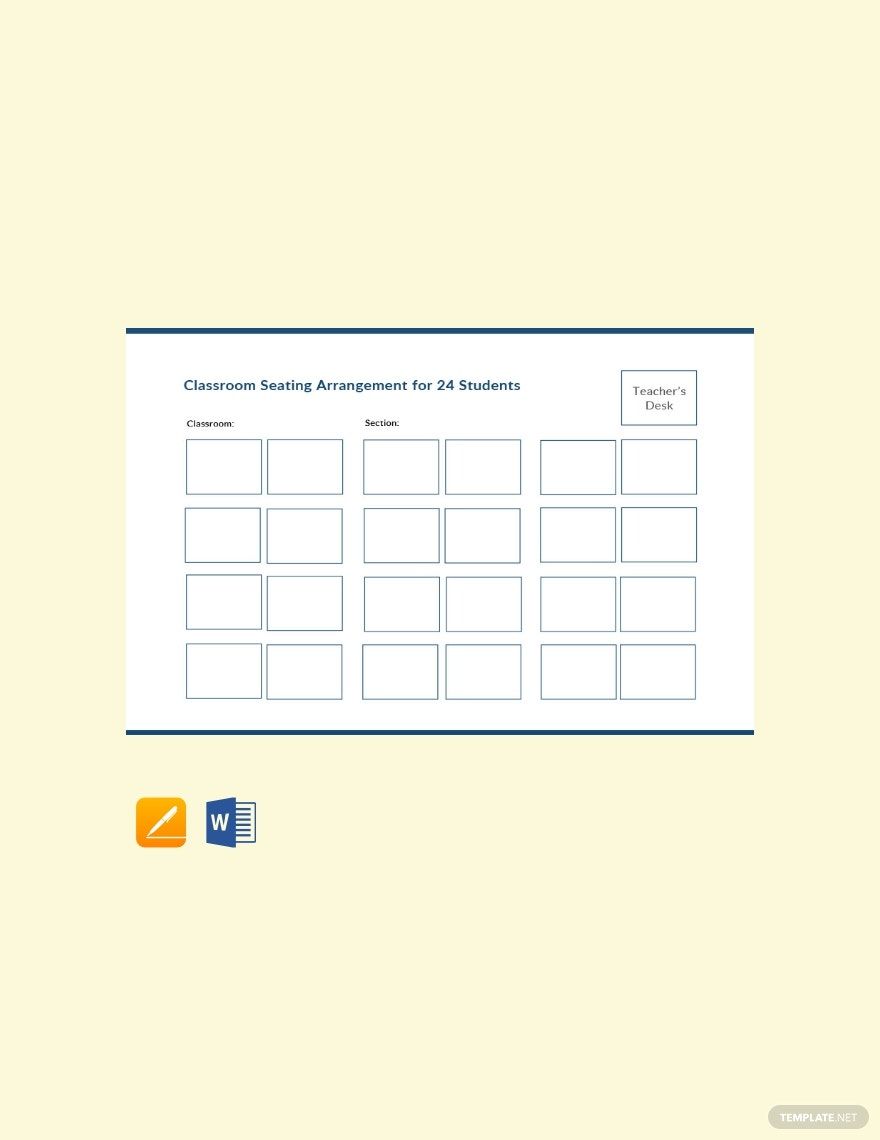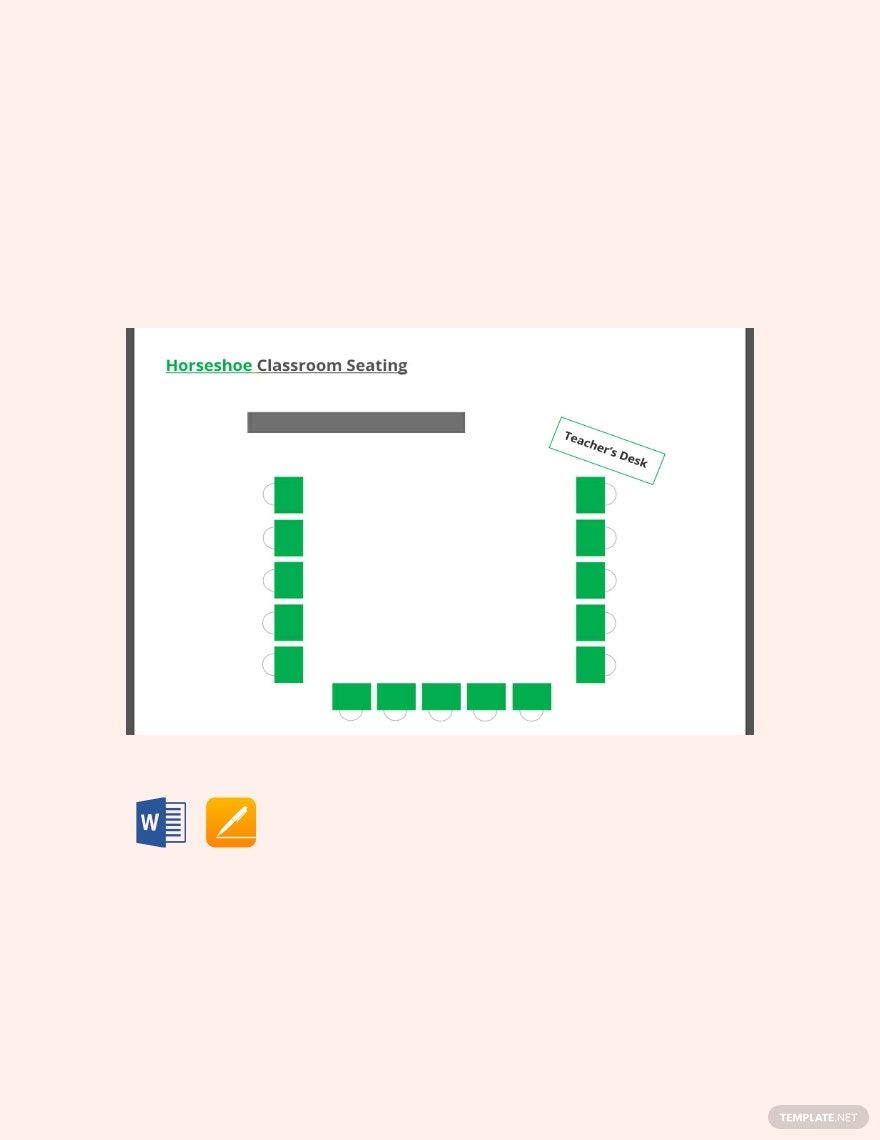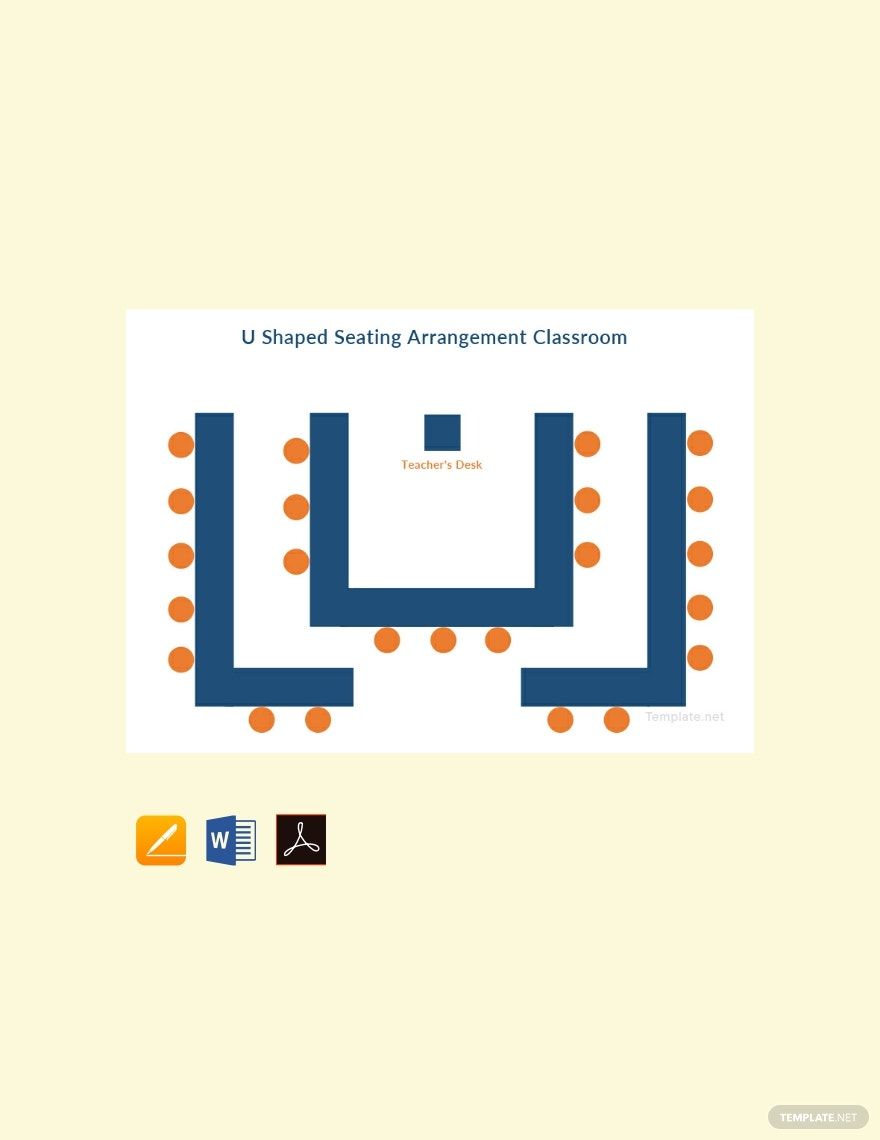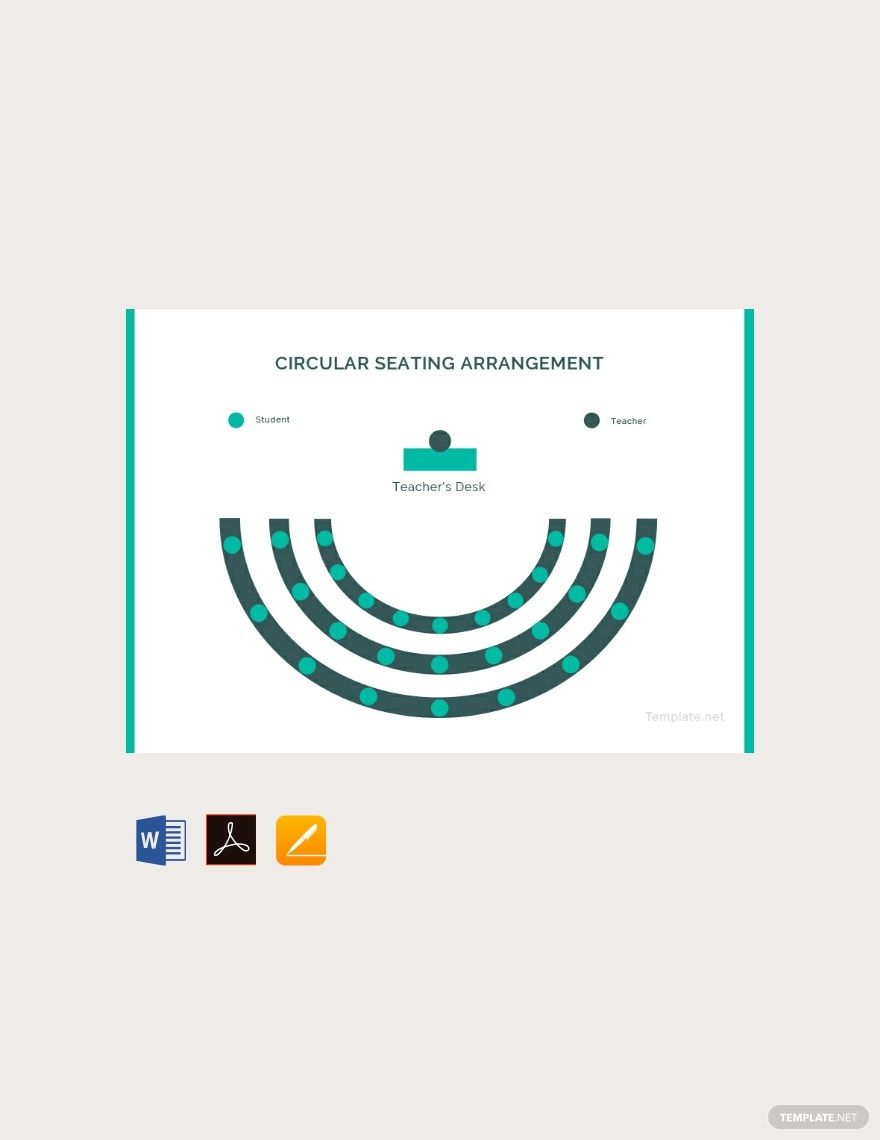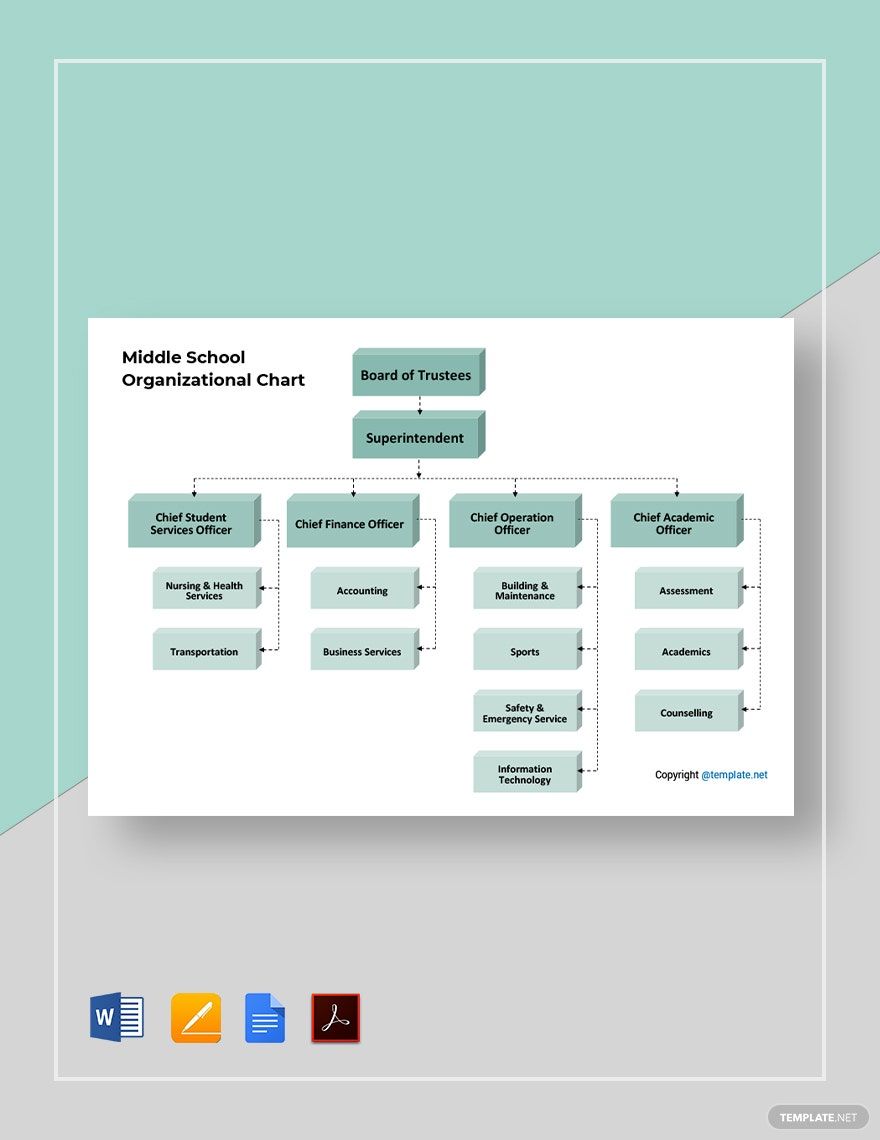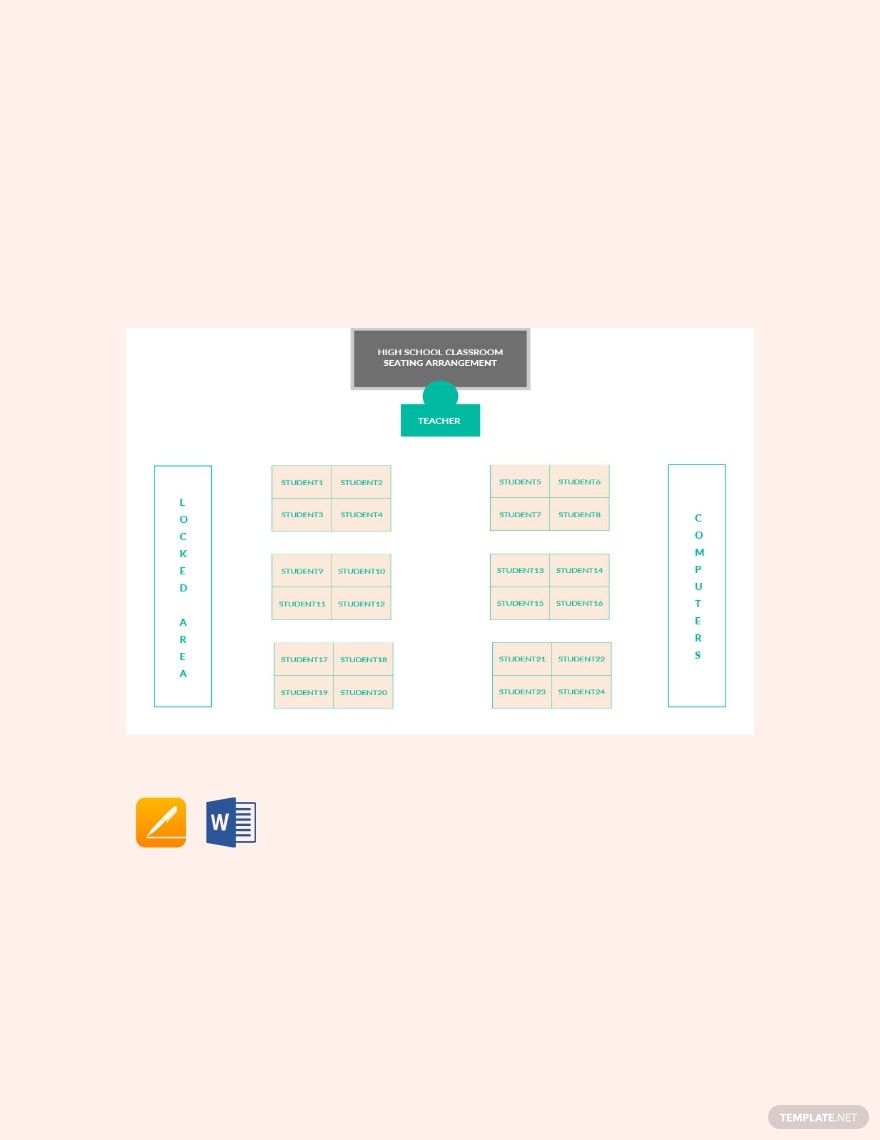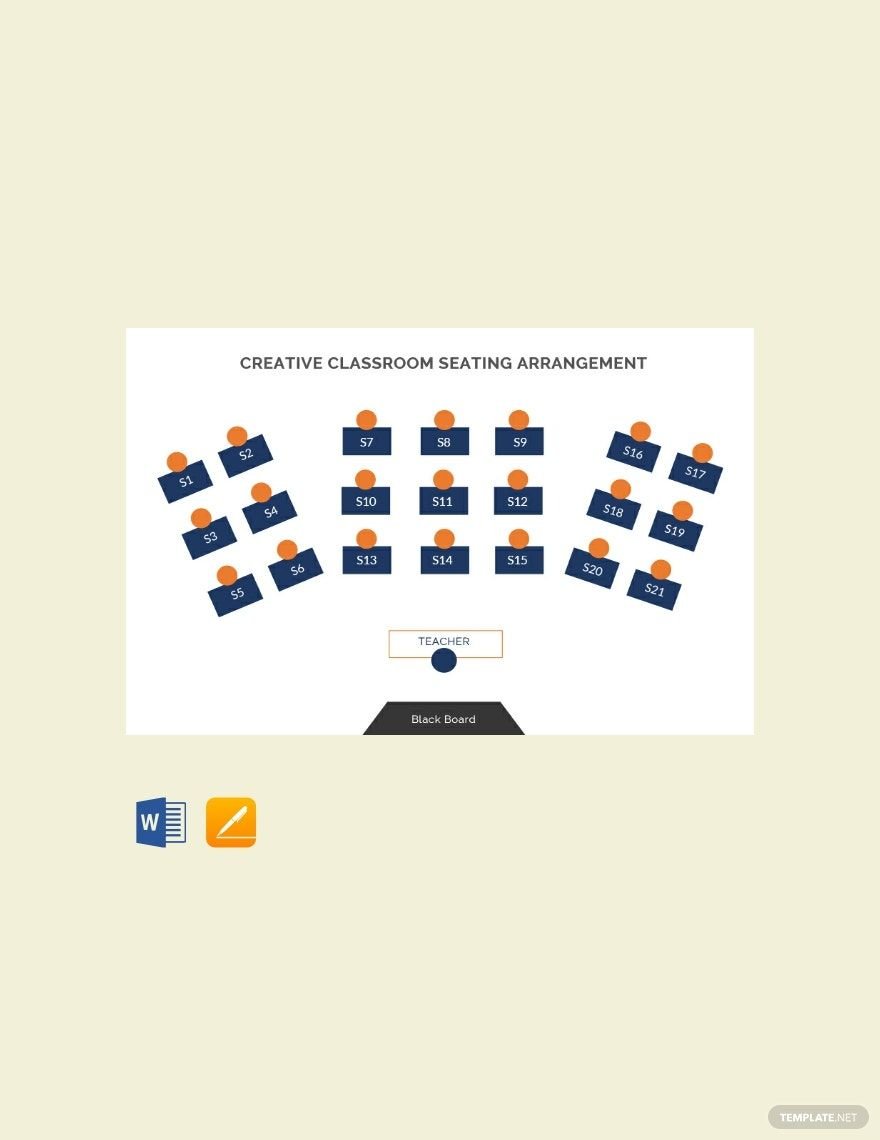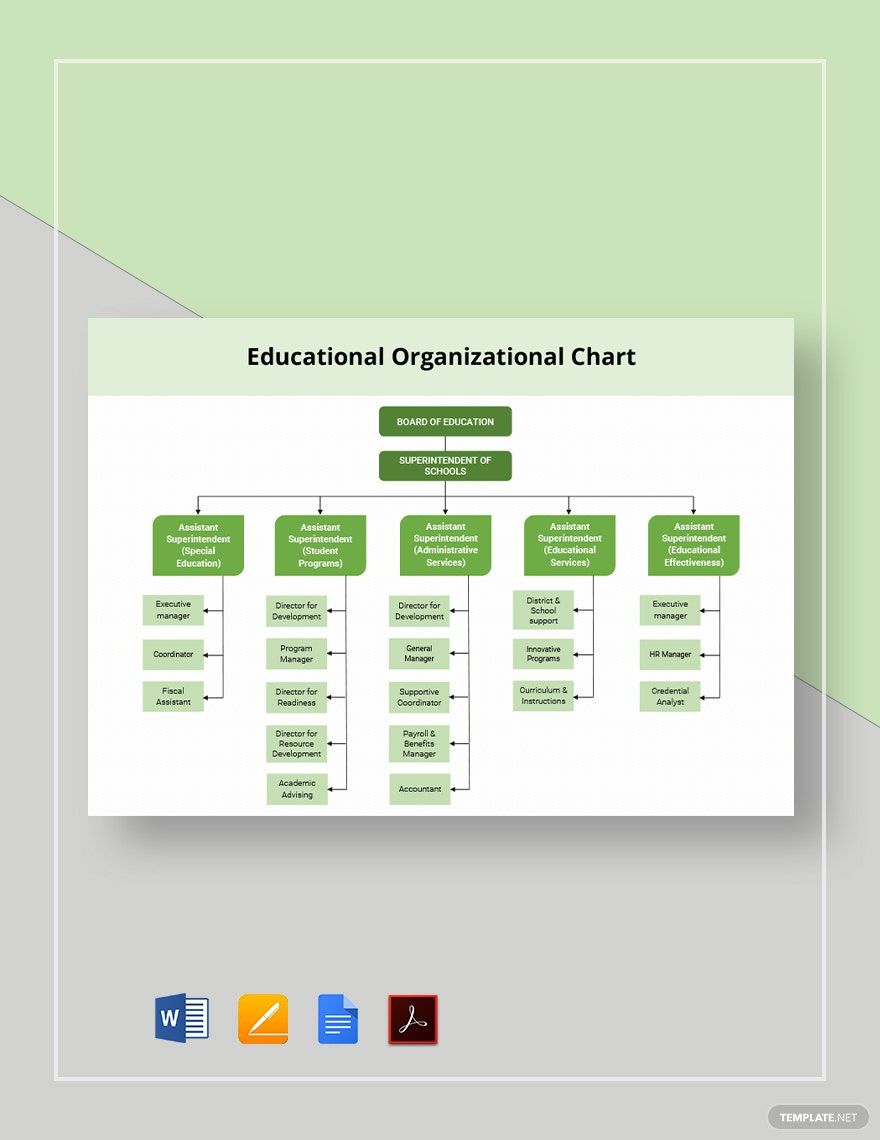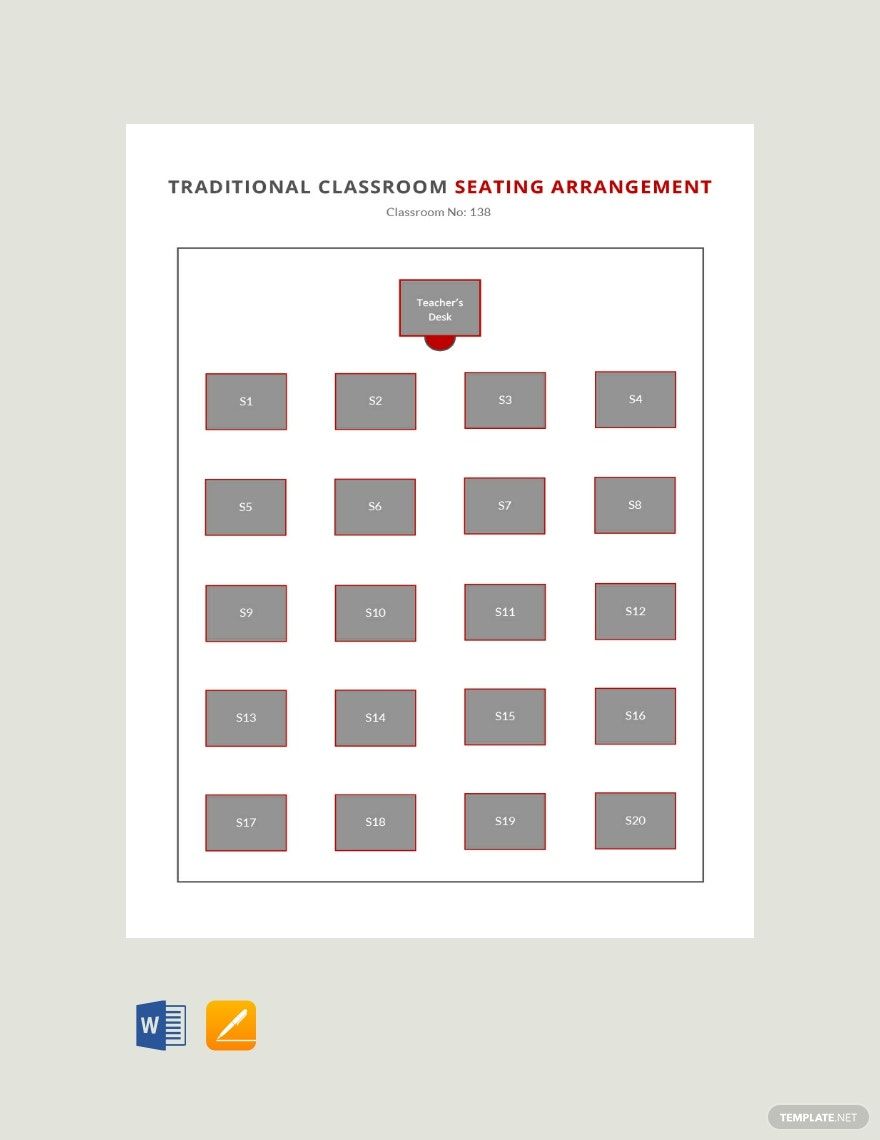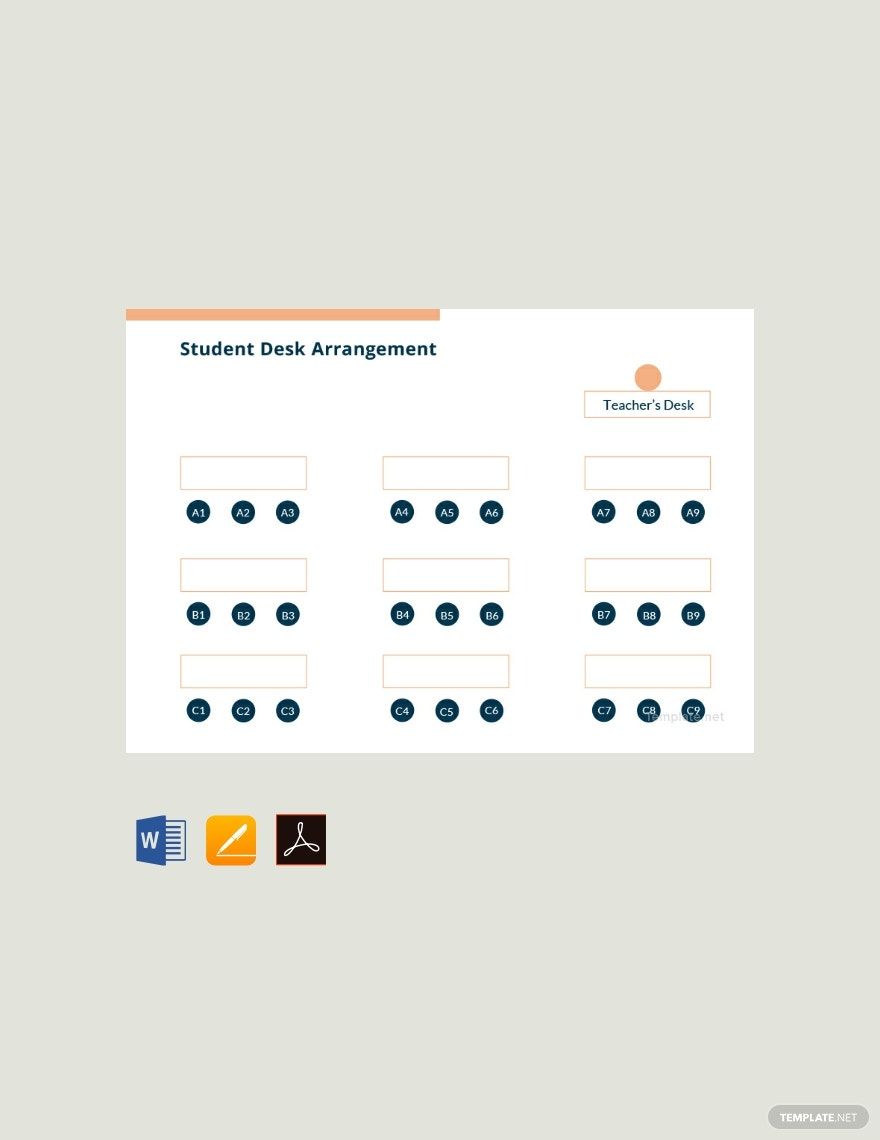With numerous students to handle, instructors have to make effective planning for seating arrangement through classroom seating charts to help ensure a quality atmosphere that is conducive for learning. With that, we gladly provide you this selection of Ready-Made Word Classroom Seating Chart Templates that are easily editable in Microsoft Word. Regardless of what grade and year level you're handling, these 100% customizable seating chart templates are a click away from your possession. Do not miss out on this opportunity and start downloading any of our Classroom Seating Chart Templates for free right now! Still distracted with doubts? Check our templates out and evaluate it yourself.
How To Create Classroom Seating Charts In Word?
A proper classroom setup is essential for effective classroom management. Making of a classroom seating plan helps the teacher ensure a positive environment not just for students, but also for facilitators. Following the right seating arrangement has a positive impact on the learning progress of the students, so as with the effectiveness of teaching styles among teachers.
Why prefer arranged seating than free seating?
Though free seating gives freedom for the student's comfort, this arrangement might encourage cliques among them that will result in poor social interaction and an unfavorable environment that could affect their education. As for planned seating, it has the advantage of giving teachers a much easier time when it comes to checking on students. Although both have their advantages and disadvantages, teachers must wisely select what particular arrangement best suits their classes for both benefits. What arrangement benefits your class?
1.Circle Arrangement
As a teacher, it's impossible not to have notebooks and journals. With that, come up with a plan that will allow you to arrange your students into a circle. This helps you conduct a discussion that activates your students. This arrangement is used mostly by professors handling numerous numbers of students, aiming to establish focus on students toward the discussion. Students have a clear view of the person expressing their own notions to a topic.
Additionally, if you have classroom and school events and you're conducting some activities or you're giving tasks to your students, this arrangement helps you create a good avenue for them to do their presentation.
2. U-shape type Arrangement
This is necessary to establish student-centered classrooms from teacher-centered. This arrangement encourages students to actively participate in the learning process. With proper planning regarding space and class size, you can make this style work. This gives everyone inside the classroom great chances to speak and participate in presentations and others to listen to the speaker. This style is best used for motivating and controlling student's behavior.
3. Round table Arrangement
This is probably the best way to go about your seating chart arrangement if you're planning to give students a lot of group tasks. This encourages students to have an agreement with other students, work with them, and teachers to monitor student's work.
Apparently, the problem is though the teacher can monitor student's work, the high possibility of misbehavior from students when the teacher is not looking is possible with this arrangement.
4. Row Arrangement
This is widely observed in most classroom arrangements. The room is divided into three columns that give the teacher enough space to walk and engage among the students. This is more friendly too since facilitators can freely help children with their work and enable giving corrections with ease. It's perfect for teachers who constantly view their checklist to see which students are present and who's able to participate in class discussions and activities.
5. Cluster Seating Arrangement
From the title itself, this arrangement persuades educators to group students accordingly to operate within its members. This creates areas to interact with other students and creates a more personal interaction with others. Many activities such as exercises, presentations, discussions, and other programs can be conducted herein.


